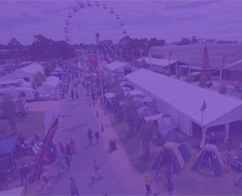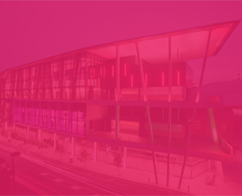
Melbourne
March 29-30, 2025
Melbourne Showgrounds

It’s been two decades since Masahiro Sakurai and Nintendo blessed us with Super Smash Bros., one of the craziest crossover fighters around, and one month into Ultimate, we thought we’d take a look back at all five games, and remember the good, the great, the bad, and the trip mechanic from Brawl. Who thought that was a good idea?
Franchises peaking in the first instalment may be true of many films, but of video games… Well, they must’ve never played Smash on Nintendo 64. It’s not bad per se, but as your professor might say on parent-teacher interview night, “it has potential.” ‘Potential’ is really the headliner for Smash.You’ve gotta give it props for the novel idea, bringing 12 “iconic” Nintendo characters together to Brawl it out in the Ultimate multiplayer melee.
Still, the OG Smash has a lot going for it; the way it gives each fighter movesets featuring faithful callbacks to their own games, a cool soundtrack with famous music from all the fighters’ series, and introduced the idea of the fighters as toys in a young child’s room, giving birth to a unique Smash Bros. lore that fans are still speculating at.
The biggest handicap that holds this game back though, is the hardware it’s saddled with, and we aren’t talking about the Nintendo 64. The cumbersome N64 controller is still baffling to this day. It is seemingly designed for aliens, because no human hands can wield it comfortably.
Ahhhh Melee, a game that, depending on who you ask, has either aged like wine, or cheese. Whether you love it or hate it, its popularity is undeniable. It is still the most popular Smash to date. Ultimate has sold faster, but as of now, Melee has it beat in sheer numbers. It’s still played professionally at most big tournaments, such as EVO, and it has an enduring fanbase. Melee is the bar by which every subsequent Smash has been judged, and the one Ultimate had to beat.
In terms of gameplay, Melee is far faster than 64, and comes with even more classic additions to the roster, but don’t get too attached to them, because if you want to play for real, you have two viable choices: Fox, or Marth. Being a fighting game on the GameCube meant no patches, so if the game shipped unbalanced, it stayed that way, and boy-howdy is it unbalanced.
Melee did introduce a lot of new gameplay additions to Smash that are now staples of the series, mostly by accident. A lot of the tech, such as wavedashing, L-cancelling, etc. is accidental, but Smash players figured them out anyway and have been using them ever since, and now look, Nintendo have officially embraced them, and are even touting them as features of Ultimate.
Brawl is like awkward middle-child syndrome in game form. There’s so much going for it, but some clunky design choices ensure that is seldom one that Smash players will be going back to. On the positive end, Brawl has possibly the most meaningful content out of any Smash game, in the form of its story mode, Subspace Emissary, and this isn’t just like Classic or Adventure mode in previous games, this is a fully-fledged story, nay, a narrative.
Sakurai and the team managed to tell a sprawling, epic, and at times very dark and serious story, with no dialogue, and with only wacky Nintendo characters. By all rights, it shouldn’t work, but the story is amazing, especially that final boss fight (Taboo for Ultimate DLC, please!). There are legitimate tear-jerker moments. And did we mention, Brawl is the first time guest characters were introduced in Smash!
So, for such a momentous occasion, who did Nintendo manage to wrangle up? First, Sonic the Hedgehog! Finally, we could play out the dream Mario VS. Sonic matchup on our TVs at home, and second, none other than everyone’s favourite family-friendly secret agent; Solid Snake! For the first time, players could drop high-powered explosives onto the likes of Kirby and Yoshi. Wild.
Also, it has a neat aesthetic where all the characters have been rendered kinda realistically, so you can see all the glorious denim on Mario’s overalls. It’s very weird for a Nintendo game to look so dark and gritty, but it looks very cool. So Brawl’s story and roster are great, but what about the gameplay? Well, it’s the slowest game in the series, which doesn’t do it any favours, and the team intentionally cut a lot of the competitive technical features to make it more casual-friendly, upsetting a lot of the hardcore players. Still, it has a very small but loyal player base at tournaments.
The one unforgivable mechanic is the tripping. When you dash, there is a one percent chance that you will trip over, for no reason. One percent doesn’t sound like a lot in theory. In actual gameplay, it seems like it happens every five seconds. And when you turn around during a dash, it becomes a 1.25% chance. Why? Brawl did introduce Final Smashes too, which are awesome, if you leave items on (which you should).
Known colloquially by its far less silly nickname, Sm4sh, this instalment still suffers from a lot of what made Brawl so unpopular with fans, but does fix some issues. It is faster, the tripping is mercifully gone, and Meta-Knight got nerfed so hard he’s still fishing foam darts out of his armour, which is always nice. Unfortunately, when the King dies, a new ruler will rise up to take their place, and now we have a good few months’ worth of top-tier Bayonetta cheese memes. Well, see me in Ultimate now, Bayo mains.
The gameplay of Sm4sh allowed for a lot more technical and long-lasting competitive play than Brawl, but in terms of game content, it is the weakest in the series. There is very little substantial single-player content. If you don’t have friends around, there is almost nothing to do, unless you’re a stickler for collectibles. The music and presentation is top notch though, and as the first Smash in HD, it looks amazing.
The 3DS version is also pretty neat. The small screen isn’t always conducive to fun gameplay, but it works. The 3DS actually features significantly better single-player content than its console counterpart, and some different stages, some of which are way better than the Wii U ones. Pac-Maze, anyone? You can also use the 3DS as a controller for the Wii U version, which is super cool.
This instalment also features true online play for the first time. Yes Brawl had online but… Not really. For Glory is the first time it actually worked, and led to years of great YouTube videos of dunking on scrubs. And finally, the biggest point in favour of Sm4sh, 8-player Smash. This mode is absolutely bonkers, it’s utter chaos, and it can get very hard to see what is going on, but it’s super fun. For all the Wii U’s faults, the implementation of so many different controller options and players was not one of them.
The new kid on the block. SmUsh. Sma5h. The nickname’s still being workshopped. It’s only been out for just over a month, but we think it’s fair to say that Sakurai and the gang did it; this game is excellent, and is a worthy successor to the Smash lineage, surpassing even Melee.
From that very first Nintendo Direct that blew everyone’s minds and built unfathomable levels of excitement, the feature being sung from the hilltops is that, finally, five games in, Everyone Is Here. Seventy six playable characters, with six more on the way as DLC. Sure, maybe it’s a bit of a cop-out to just put in all the old characters and say, “Look, the game is bigger now,” but it is really awesome to finally play as all the old favourites again, going up against the newcomers and modern classics.
Characters that have never met in the previous games finally have the chance to duke it out. Pichu vs. Snake, Cloud vs. Ice Climbers, Incineroar vs. his own Up-B, The Belmonts vs. being offstage, K. Rool vs. actually playing the game; it’s amazing. There’s actually real single-player content, too! World of Light is no Subspace Emissary, but it’s something. The Spirit battles are fun, sometimes frustrating, ways of seeing characters that didn’t quite make it being represented in Smash, and the novelty stays fresh for a good amount of time. Collecting Spirits becomes strangely addictive very quickly.
Starting the game with only the original eight fighters from the Smash 64 roster is also a great way to incentivise players to experiment with new characters as they unlock the full roster, and leads to a good sense of pride and accomplishment when everyone is finally there on the Character Select screen. It’s nice to actually have to play the game to unlock the content, rather than having it all handed to you at the start, something that Nintendo thankfully haven’t forgotten about. The roster is more balanced than ever, mostly, and the team is really committed to making this competitively viable, with loads of new tech added, intentionally, that spices up matches. Parrying with a perfect shield, directional air-dodging, and more customisation than you can shake a Smash Ball at, all adds up to one definitive Smash Bros. experience.
If this is the final Smash game (see what we did there?), then Nintendo will have ended on a truly high note.






